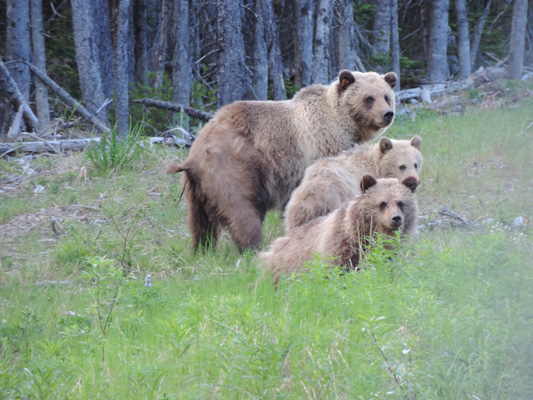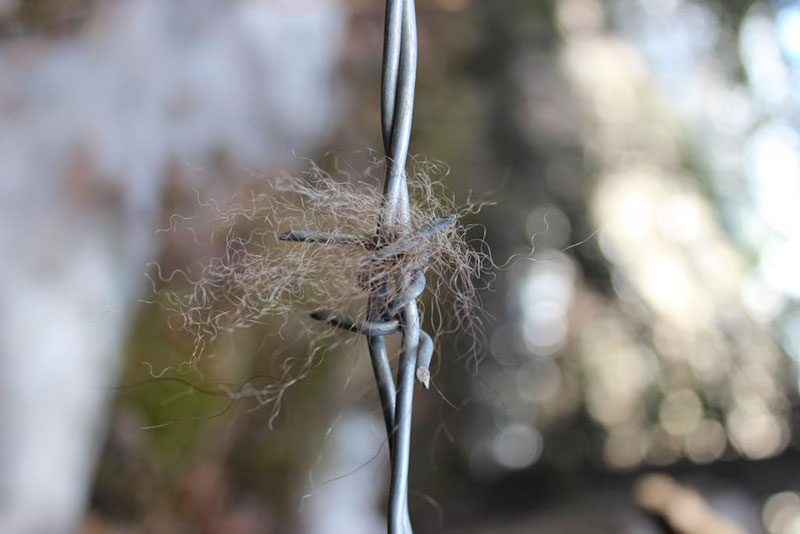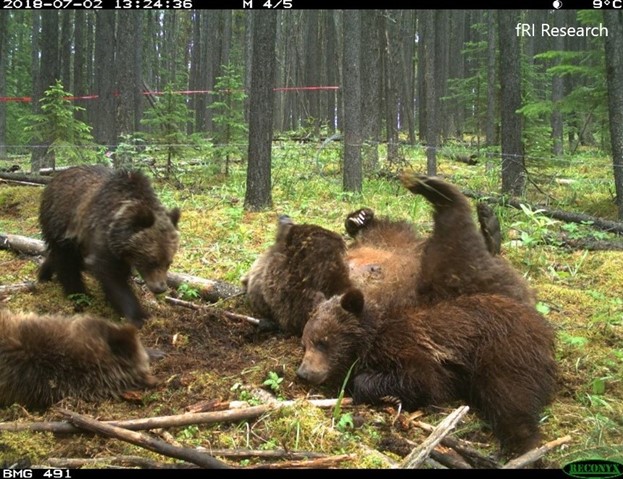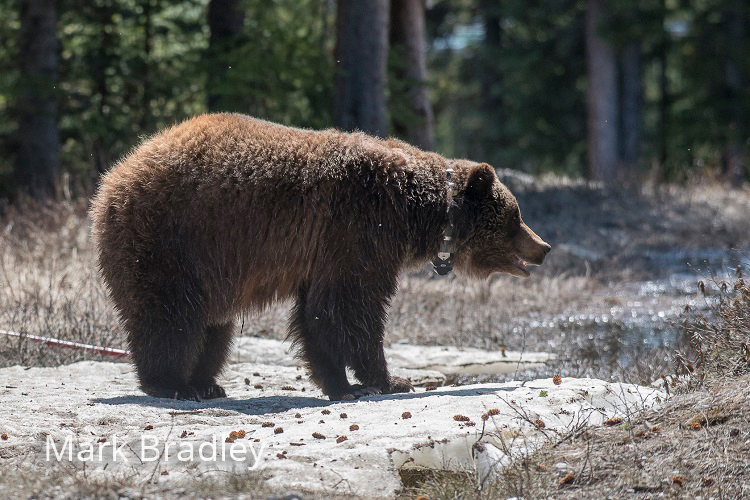
For immediate release.
Hinton, March 2021 — fRI Research has found a population increase in one large area of Alberta, and completed the first ever grizzly bear count in another.
A nearly 10,000 km2 area of boreal forest between Whitecourt and Lesser Slave Lake, known as Bear Management Area 7, had a low precision for the population estimate resulting in wide confidence intervals. 39 unique bears were identified, and it is recommended that a population estimate of 62 grizzly bears be used for management purposes. This is the first scientific population estimate for this area.
Bear Management Area 4, from Banff National Park to Highway 22, has an estimated 88 grizzly bears, which is approximately twice as many as in 2005, when we first surveyed this area.
This is the second area to show significant increases in grizzly numbers. In our re-survey of the Yellowhead region (BMA 3), immediately to the north of BMA 4, we also found that the population had approximately doubled, from 36 in 2004 to 74 in 2014.
With these up-to-date numbers, Alberta Environment and Parks can now reconcile the various population estimates to calculate the total number of grizzly bears in Alberta. This will give the clearest picture yet for grizzly bear management plans.
This was an enormous field study involving 23 grad students who spent the summer setting up and checking nearly 400 hair snag sites, many in very remote locations. These sites surrounded a scent lure of rotten cattle blood with a strand of barbed wire to collect tufts of grizzly bear hair. We then used the DNA from the hair to identify individual bears and estimate the populations in each BMA.
“This was truly a team effort by the many field workers, helicopter pilots, laboratory personnel, GIS analysists, statisticians who, with the support of the partners, have worked together to provide important new data for provincial grizzly bear management and recovery,” says project lead Gordon Stenhouse.
The fRI Research Grizzly Bear Program conducted this research with the strong financial support of Alberta Environment and Parks, Millar Western, Spray Lakes Sawmills, Vanderwell Contractors, and West Fraser. This work would not have been possible without the expertise and commitment of all partners, who recognized the value of this science and worked together to make it happen.
“These results are a testament to what can be achieved when industry, government, and research organizations work together,” says Alberta Forest Products Association President and CEO, Jason Krips. “The forest industry has been supporting grizzly bear research for decades and incorporating the results into our practices. We are pleased to see increasing populations of this iconic species.”
More Information
Scientific contact: Gord Stenhouse | gstenhouse@friresearch.ca | 780.817.0797
Government policy contact: Jess Sinclair | Jess.Sinclair@gov.ab.ca | 780.920.1374
-30-









